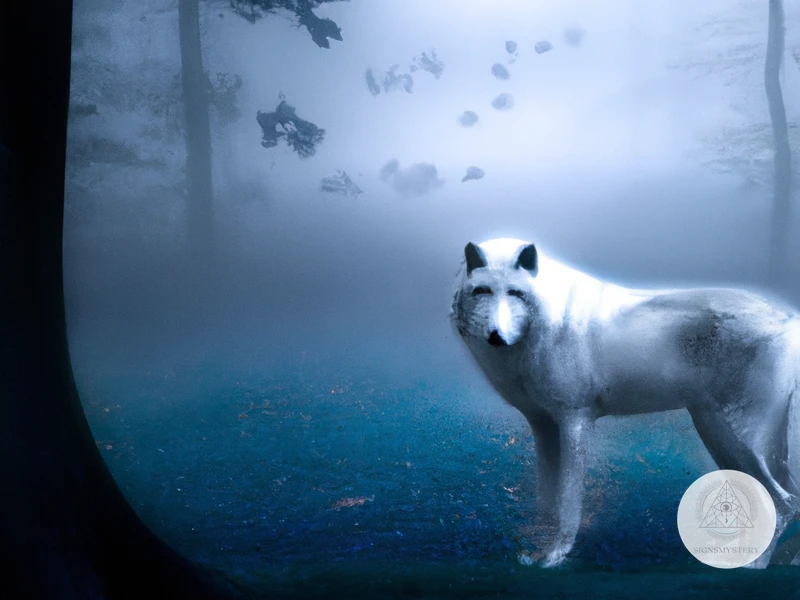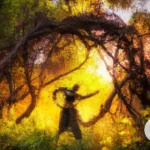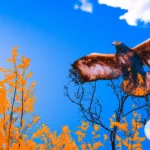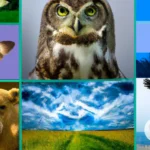The connection between humans and animals has been a topic of fascination since ancient times. In shamanic mythology, animal spirits hold significant importance as they represent the connection between the physical and spiritual realms. These spirits serve as guides, protectors and sources of wisdom, harboring deep symbolism and cultural significance. This article will dive into the world of animal spirits, exploring their definitions, origins, and symbolism, as well as the ways in which they are used in shamanic practices and modern times. Join us on a journey through the mystical forests of shamanic lore, where the power of animals reigns supreme.
What are Animal Spirits?
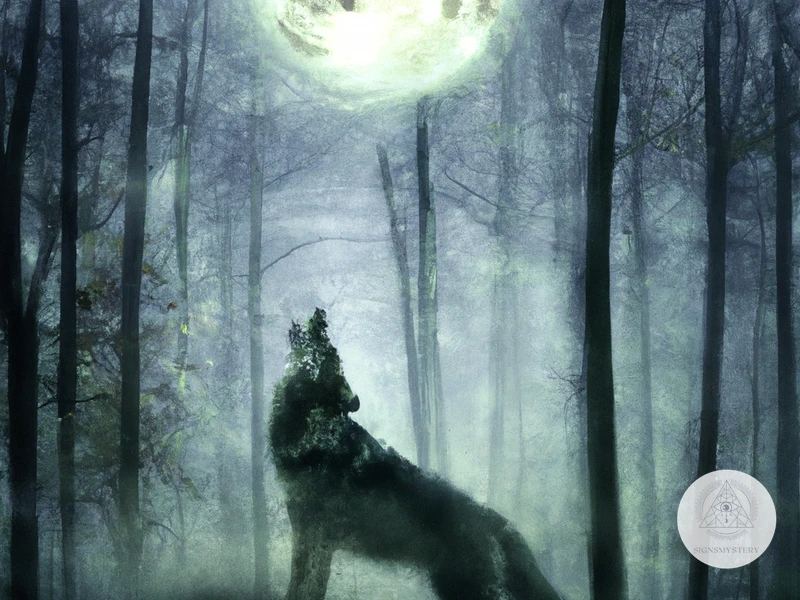
Animal spirits are an essential aspect of shamanic mythology and belief systems. They are believed to be supernatural entities that possess unique characteristics and spiritual powers. In shamanic traditions, animal spirits are considered to be guides, helpers, and protectors. According to shamanic beliefs, every living being possesses an animal spirit that serves as a source of strength and guidance.
The term “animal spirit” refers to the spiritual essence of an animal that is believed to exist beyond the physical plane of existence. The spiritual essence of an animal is believed to be connected to the natural world and the spirit realm, making it a powerful source of enlightenment and guidance. Animal spirits are believed to have unique aspects, including strengths, weaknesses, and personality traits that are associated with the animal’s physical attributes.
The concept of animal spirits is deeply rooted in shamanic mythology and is believed to have originated during ancient times. Shamanic traditions have been practiced for thousands of years and have evolved over time, with animal spirits playing a crucial role in many shamanic practices. Shamanic healers have used animal spirits to assist in their healing practices, and tribal leaders have consulted with animal spirits for guidance and protection.
Animal spirits have also been an essential part of storytelling in shamanic traditions. These stories and myths are passed down from generation to generation as a way to preserve tribal culture and history.
In modern times, the concept of animal spirits has gained popularity in spiritual practices, including New Age movements and holistic healing practices.
Mythology in shamanism is closely linked to the belief in animal spirits. In shamanic practices, animal spirits are often viewed as deities or divine beings that serve as guides and protectors.
Animal spirits play a significant role in shamanic practices, and their importance has been recognized throughout history, making them an essential aspect of shamanic mythology.
Definition
Animal spirits are believed to be the essence of animals that exist beyond their physical form. They are considered to be spirits or guides that can help humans gain wisdom and understanding about life. In shamanic mythology, animal spirits are believed to have the power to affect human consciousness and influence the human experience in various ways. These spirits are often associated with particular qualities and characteristics that can help individuals learn more about themselves and the world around them. If you are interested in learning more about shamanic mythology, there are several resources available online, including websites that offer shamanic myths comparison, symbolism in shamanic mythology and storytelling shamanic traditions.
Origin and History
Origin: The origin of animal spirits in shamanic mythology can be traced back to the animistic beliefs of prehistoric humans, who believed that every creature, animate or inanimate, possessed a spirit or soul. This belief laid the foundation for shamanic traditions, which established a connection between humans and the natural world through the spirits of animals.
History: Throughout history, animal spirits have played a significant role in shamanic practices across cultures. In Siberian shamanism, for example, practitioners believed that animal spirits acted as intermediaries between the physical and spiritual realms and facilitated communication with otherworldly beings. In Native American shamanism, animal spirits were seen as powerful guides and protectors that could provide insight and advice on various aspects of life.
The use of animal spirits in shamanic practices was also evident in other cultures such as African, Australian Aboriginal, and South American. In these cultures, animal spirits were often associated with specific natural elements, seasons, or cycles of life, and were considered vital for spiritual growth and healing.
The history and origin of animal spirits in shamanic mythology demonstrate the widespread belief in the spiritual qualities of animals and their ability to assist humans on their spiritual journey. To learn more about shamanic myths comparison or symbolism in shamanic mythology, click on the relevant links.
Animal Spirits in Shamanic Belief Systems
In shamanic belief systems, animal spirits are considered to be powerful entities that can provide guidance, support, and protection. There are various types of animal spirits, each with its unique symbolism and characteristics. Some of the most common animal spirits include:
- Birds: Often associated with freedom, transcendence, and connection with the spirit realm.
- Reptiles and Amphibians: Representing transformation, regeneration, and renewal.
- Mammals: Symbolizing strength, intuition, and primal energy.
- Insects: Signifying diligence, hard work, and cooperation.
Animal spirits are often chosen based on their symbolism and characteristics and are believed to possess their unique strength and wisdom. For example:
- The Wolf: Represents loyalty, strength, and teamwork. In Native American mythology, wolves were considered spiritual pathfinders.
- The Bear: Symbolizes power, healing, and protection. Native American tribes have long believed that bear claws offer protection and good health.
- The Owl: Representative of wisdom, keen perception, and heightened senses. Uralic and Native American myths describe the owl as a powerful spirit helper.
- The Butterfly: Symbolizing metamorphosis and rebirth. In Indigenous cultures, butterfly spirits are believed to bring joy, peace, and harmony.
Whether they appear in dreams, visions, or day-to-day life, animal spirits have significant roles in shamanic mythology from different cultures across the globe. Every symbolic animal has unique aspects that solidify its association with the spirit realm.
Shamanic myths and traditions in different cultures portray animal spirits through various stories, myths, and legends. Thus, every society has unique but relatable characteristics attached to animal spirits.
Types of Animal Spirits
Animal spirits are a central element in shamanic mythologies, and they can manifest in many forms and species. Birds, such as the eagle or owl, are often considered messengers between the spirit world and humans. They can help shamans gain wisdom and insight and are associated with traits such as freedom, intuition, and hidden knowledge. Other animal spirits include the bear, which represents strength and healing, the wolf, a symbol of loyalty and protection, and the deer, which is connected to gentleness and grace. Each animal spirit has its unique power and abilities, and understanding them is essential in shamanic practices. By recognizing the characteristics of different animal spirits, shamans can gain guidance and even transform into different creatures during ceremonies using a process of astral projection and shape-shifting. Animal spirits are vital in shamanic practices and a reminder of humanity’s interconnectedness with nature and the spiritual realm.
Symbolism and Characteristics
In shamanic mythology, animal spirits are intricately associated with specific symbolic meanings and traits, which play a significant role in healing and spiritual practices. Each animal is believed to possess unique qualities and characteristics that shamanic practitioners may utilize to connect with the spiritual world. Below are the symbolism and characteristics of some of the most common animal spirits in shamanic belief systems:
| Animal | Symbolism and Characteristics |
|---|---|
| Wolf |
|
| Bear |
|
| Deer |
|
| Hawk |
|
| Snake |
|
It’s essential to note that the symbolism and characteristics of animal spirits may differ depending on the shamanic tradition and cultural background. For instance, in Native American shamanism, snakes may be associated with malevolent forces, unlike African shamanic practitioners, where they signify healing and transformation.
Animal spirits’ symbolism and characteristics may be utilized to understand an individual’s personality traits, spiritual path, and life purpose. Shamans believe that if an individual identifies with a particular animal spirit, they may embody some of its characteristics and qualities. Thus, animal spirits play an essential role in self-discovery, healing, and spiritual growth.
In the next section, we will explore how animal spirits are used in shamanic practices.
How Animal Spirits are Used in Shamanic Practices
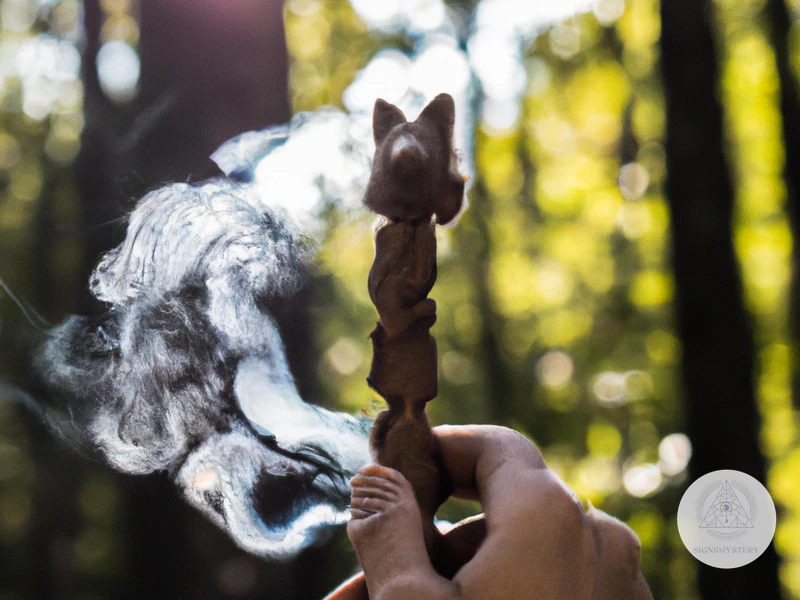
Animal Spirits Used in Shamanic Practices
Shamanic practices involve connecting with the spiritual realm through various means, and animal spirits are an integral part of these practices. Animal spirits are believed to possess unique qualities that can guide and protect shamanic practitioners in their spiritual journey. The following are some common ways that animal spirits are used in shamanic practices:
In shamanic beliefs, animal spirits are considered spirit guides that can help an individual in their spiritual journey. These guides are believed to possess unique traits that can assist individuals with particular challenges or lessons in their life. For example, a person struggling to find their purpose in life might seek guidance from the eagle spirit guide, which symbolizes vision, illumination, and spiritual power.
Shamanic practitioners utilize various techniques to enter an altered state of consciousness, such as drumming or meditating. In this state, they believe they can astral project or shape-shift into animal forms to explore different realms. The animal form can vary depending on the practitioner’s intention or the specific animal spirit guide they wish to connect with.
Animal spirits are integral to shamanic rituals and ceremonies, such as vision quests or sweat lodges. These ceremonies involve calling upon different animal spirits for guidance, protection, or healing. The rituals can be performed individually or as a group, and they often involve the use of various shamanic tools, such as smudging herbs or incense.
Animal spirits play a significant role in shamanic practices, and they are believed to offer insight, guidance, and protection to practitioners. By connecting with animal spirits through various means, shamanic practitioners hope to gain a deeper understanding of themselves and the spiritual realm.
Animal Spirit Guides
Animal spirit guides are an essential part of shamanic practices, serving as personal guardians and protectors. These guides are believed to be spiritual animals that connect us to the spiritual world. They are considered to have unique abilities and qualities that can offer guidance in different aspects of our lives. The choice of an animal spirit guide is believed to be a personal one that can reflect one’s personality or current state of being. It is also possible to have multiple animal spirit guides at once. The relationship between an individual and their spirit guide is often built through meditation, dreams, and other shamanic practices. In shamanic mythology, animal spirits are seen as powerful symbols with significant meanings that can be interpreted through storytelling and ritual practices.
Astral Projection and Shape-Shifting
In shamanic mythology, astral projection and shape-shifting are powerful tools used to connect with animal spirits and gain insight into the unseen world. Astral projection is a process in which one’s consciousness leaves their physical body and travels to the spiritual realm. Shape-shifting, on the other hand, is a practice in which a shaman is able to take on the form of an animal spirit, allowing them to experience the world through a different perspective.
Shamans believe that through astral projection and shape-shifting, they are able to establish a deeper relationship with animal spirits and harness their abilities. This relationship also allows shamans to gain a better understanding of the natural world and their place within it.
How Astral Projection Works:
During astral projection, a shaman’s consciousness is believed to leave their physical body and travel to the spiritual realm. This can be achieved through deep meditation or the use of hallucinogenic plants. Once in the spiritual realm, a shaman is able to communicate with animal spirits and receive messages or guidance from them.
Shape-Shifting:
Shape-shifting is another tool used by shamans to connect with animal spirits. Through this practice, a shaman is able to take on the form of an animal and experience the world through their eyes. This allows the shaman to gain a deeper understanding of the animal spirit and harness their abilities.
It is important to note that astral projection and shape-shifting are not physical practices, but rather spiritual and psychological ones. They are not meant to be taken literally, but rather symbolically. These practices allow for a deeper connection with animal spirits and a better understanding of the natural world.
Related Links:
If you’re interested in exploring more about the symbolism in shamanic mythology, read our article about Symbolism in Shamanic Mythology. To learn about the role of storytelling in shamanic traditions, you can read our article about Storytelling in Shamanic Traditions. If you would like to dive deeper into the relationship between shamanic mythology and religion, read our article about Religion and Mythology in Shamanism.
Rituals and Ceremonies
Rituals and ceremonies are an integral part of shamanic practices involving animal spirits. The intent of rituals and ceremonies is to create a spiritual connection between the shaman and the animal spirit. These rituals often involve the use of sacred plants, music, dance, and chanting.
One such ceremony is the Vision Quest, which is a rite of passage for many Native American cultures. It involves going out into the wilderness alone and fasting for several days while seeking a vision from the animal spirits. Another common ceremony is the Sweat Lodge ceremony, which is a purification ritual involving intense heat and steam.
Shamans also perform various rituals to honor animal spirits, including offerings of food and tobacco, and the burning of sage and other medicinal herbs. These rituals are believed to help establish a spiritual connection with the animal spirit and allow the shaman to access its wisdom and power.
Animal spirits are also invoked in healing ceremonies. The shaman will often call upon the animal spirit to assist in the healing process and to help guide the patient toward a state of wellness. These ceremonies may involve the use of drumming, dancing, and chanting.
Rituals and ceremonies are a crucial part of shamanic practices involving animal spirits. They help establish a spiritual connection between the shaman and the animal spirit, allowing for healing, guidance, and spiritual growth.
Connecting with Animal Spirits
The process of connecting with animal spirits requires an open mind and a willingness to learn. Here are some ways to establish a deeper connection:
Meditation and journeying are effective tools used in shamanic practices to connect with animal spirits. They offer an opportunity to go beyond the physical realm and explore the spiritual world. To begin, find a quiet and comfortable place to sit. Close your eyes and focus on your breathing. Allow your mind to quiet and visualize a peaceful forest. Meditation can help you establish a deeper connection with your animal spirit.
Next, try journeying. Journeying is similar to meditation, but instead of staying in one place, you allow your spirit to travel to other realms. Journeying can help you communicate with your animal spirit and receive messages. To journey, find a comfortable place to lie down and close your eyes. Listen to shamanic drumming or music and visualize yourself traveling to a place where you can connect with your animal spirit.
Dreams are another way in which animal spirits can communicate with us. Pay attention to dreams that involve animals or specific places. Take note of any feelings or emotions that
Subscribe to Our Newsletter
Sign up to receive the latest news and updates.
Connecting with animal spirits can have a profound impact on your life. It can provide guidance, healing, and protection. Utilizing these techniques can help you establish a deeper connection with your animal spirit and foster a stronger relationship. To learn more about the mythic archetypes in shamanic practices and how to interpret their meanings, check out our other articles.
Meditation and Journeying
Connecting with animal spirits can be achieved through different techniques, one of them being meditation and journeying. Meditating with the intention of reaching a state of heightened consciousness and connecting with animal spirits is a common practice in shamanism. During this process, individuals may visualize themselves entering a trance-like state and journeying to different realms or dimensions to meet their spirit guides. It is important to have an open mind and focus on the intention of connecting with the animal spirit. During the journey, individuals may encounter different animals that will have a message or offer insight to help guide them. It is important to remember that each person’s journey is unique, and the presence and messages received from the animal spirits can vary. So, allow yourself to be guided in this unique experience.
Dream Interpretation
Dream interpretation is a powerful tool for connecting with animal spirits and receiving guidance from them. In shamanic traditions, dreams are seen as messages from the animal spirits and the spiritual realm. Interpretation of these dreams requires an understanding of the symbolism and characteristics of the animal spirits.
Here are some common animal spirits and their meanings in dreams:
| Animal Spirit | Meaning in Dreams |
|---|---|
| Bear | The bear represents strength, power, and healing. If a bear appears in a dream, it may indicate a need to tap into one’s own inner strength. |
| Wolf | The wolf represents loyalty, intuition, and adaptability. If a wolf appears in a dream, it may indicate a need to trust one’s instincts and adapt to new situations. |
| Deer | The deer represents grace, gentleness, and sensitivity. If a deer appears in a dream, it may indicate a need to connect with one’s own gentleness and grace. |
| Eagle | The eagle represents freedom, inspiration, and courage. If an eagle appears in a dream, it may indicate a need to connect with one’s own inner courage and inspiration. |
It’s important to consider the context of the dream as well as the individual’s personal associations with the animal when interpreting the symbolism. Working with a shamanic practitioner or dream interpreter can also help unravel the deeper meanings behind animal spirit dreams.
In addition to interpreting animal spirit dreams, one can actively seek out dream guidance from animal spirits through techniques like lucid dreaming and dream incubation. By setting an intention before sleep and practicing techniques for increasing dream recall, one can invite animal spirits to visit their dreams and offer guidance.
Animal Spirits in Modern Times
In today’s world, the importance of animal spirits and their symbolism has not faded away. Instead, they have crept their way into modern society through popular culture and awareness of environmental sustainability.
Animal spirits have been featured in numerous books, movies, and TV shows in recent years. One example is J.K. Rowling’s Harry Potter series, where the characters can transform into animals through magic. In the blockbuster movie “Avatar,” the Na’vi people have a strong connection to their animal spirits, which are known as “ikran” and “toruk.” Other popular movies like “The Lion King” and “Finding Nemo” depict the intimate relationships and connections that exist within the animal kingdom.
Animal spirits have also made their way into modern fashion and design. You can easily spot clothing and accessories embellished with images of animals or animal prints. Some people even get tattoos of their spirit animal to represent their inner selves and personalities.
The recognition of animal spirits has also brought awareness to the need to protect and conserve various animal species. Many indigenous cultures believe that every animal has a spirit or soul that is connected to the environment. As such, they know that if any species goes extinct, it disrupts the balance of nature and harms other living organisms.
This belief has driven people to work towards the conservation of endangered species. Efforts have been made to preserve habitats, educate people on the importance of biodiversity, and reduce the negative impact of human activity on the environment.
Although the perception and interpretation of animal spirits may differ across various cultures, they remain significant even in modern times. Whether as a representation of our inner selves or as a symbol of environmental sustainability, animal spirits continue to influence and inspire many aspects of our lives.
In Popular Culture
Animal spirits have made a significant impact in popular culture, appearing in various forms such as movies, TV shows, books, and merchandise. Many popular animated movies feature animals with human-like characteristics, depicting animal spirits as wise teachers or guides. For instance, in The Lion King, the character Rafiki represents a baboon who serves as a spiritual advisor and mentor to Simba. The wolf pack in The Jungle Book is also an example of animals that symbolize loyalty, strength, and tribalism. Various sports teams use animal symbols to represent their strength, determination, and fierce competitiveness, like the Elephantas and Cheetahs, to mention a few. Animal spirits continue to fascinate and inspire people in contemporary society, representing different traits and beliefs that humans strive for in their everyday lives.
Sustainability and Conservation
The significance of animal spirits in shamanic mythology has made many people more aware of the importance of sustainability and conservation in modern times. The spiritual connection to nature and animals has sparked a renewed interest in protecting our planet’s ecosystem.
Shamans believe that all living things are interconnected and that we have a responsibility to care for the environment and wildlife. The loss of one species can have a dire impact on the balance of the entire ecosystem. The way we treat nature reflects back on us, affecting our own well-being and spiritual growth.
To promote sustainability and conservation, people are encouraged to live in harmony with nature and make conscious decisions about the impact of their actions. This includes reducing our carbon footprint, recycling, conserving water, and choosing sustainable products.
Conservation efforts aim to protect endangered species from extinction and preserve biodiversity. Wildlife sanctuaries and protected habitats have been established to ensure the survival of threatened animals.
The fashion industry has also shifted its focus toward sustainability with an increasing number of companies using eco-friendly and vegan materials. Many people are choosing to follow a plant-based diet, recognizing the impact that animal agriculture has on the environment.
The spiritual significance of animal spirits in shamanic mythology has reminded us of our interconnectedness with nature and the importance of sustaining and conserving our planet. By making conscious choices and taking care of our environment, we can continue to live in harmony with the animal spirits that have long been a part of our belief systems.
Conclusion
In conclusion, animal spirits have always held a significant place in shamanic mythology. These spirits are believed to have powers and qualities that can be utilized by those seeking guidance and healing through Shamanic practices. Throughout the ages, animal spirits have been depicted in various ways across different cultures, but their essence remains the same; they represent a connection to nature and the spiritual realm.
In Shamanic belief systems, animal spirits serve as guides and mentors in navigating life’s journey. Many practices involve connecting with one’s animal spirit, harnessing its strength and power, and seeking wisdom and insight. This connection helps one to become more attuned to the natural rhythm of life, bringing a sense of balance and harmony to one’s being.
Connecting with animal spirits can be achieved through various practices such as meditation, journeying, and dream interpretation. These practices allow individuals to access the unconscious realm, connect with their inner selves, and gain a deeper understanding of their place within the world.
Moreover, animal spirits also have a significant role to play in popular culture. Many movies, books, and television shows feature animals as central characters, often with mystical or spiritual qualities. These representations have helped to keep the importance of animal spirits alive in modern times.
However, it is also vital to note the importance of sustainability and conservation in preserving the natural world and the animal spirits that inhabit it. As humans, we must strive to create a harmonious relationship with the natural world and treat all living beings with respect and dignity.
In conclusion, while the concept of animal spirits may be complex and mystifying, they offer a valuable connection to the natural world and the spiritual realm. The wisdom, guidance, and healing that we can receive through connecting with animal spirits are immeasurable, making them an essential part of shamanic mythology and our understanding of the world.
Frequently Asked Questions
What is the purpose of animal spirits in shamanic mythology?
Animal spirits serve as guides and teachers in shamanic mythology, guiding shamans on their spiritual journeys and providing them with insights and wisdom.
How are animal spirits chosen?
Animal spirits are often chosen through dreams, visions, or meditative journeys. It is said that the animal chooses the shaman, rather than the other way around.
What are some common animal spirits in shamanic mythology?
Common animal spirits include the wolf, bear, eagle, owl, and snake. However, every culture has its own unique set of animal spirits.
What characteristics do animal spirits embody?
Animal spirits embody a variety of characteristics, such as strength, courage, wisdom, and intuition. They represent both the positive and negative aspects of human nature.
What is the role of animal spirits in shamanic rituals?
Animal spirits can be called upon during shamanic rituals to imbue the shaman with their power and energy. They may also be honored and respected through offerings and ceremonies.
Is it important to have a specific animal spirit guide?
While having a specific animal spirit guide can be helpful, it is not necessary. Animal spirits can come and go as needed, and different animal spirits may be called upon for different purposes.
Can anyone connect with animal spirits?
Yes, anyone can connect with animal spirits through meditation, journeying, or other shamanic practices. However, it takes time and practice to develop a strong connection with them.
What is the significance of sustainable conservation in relation to animal spirits?
Sustainable conservation is important in order to honor and respect the natural world and the animal spirits that inhabit it. It is also essential for maintaining balance and harmony in the ecosystem.
How can animal spirits be incorporated into modern spiritual practices?
Animal spirits can be incorporated into modern spiritual practices through meditation, symbolism, and art. They can also serve as a source of inspiration and guidance for personal growth and healing.
Why do animal spirits continue to resonate with people today?
Animal spirits continue to resonate with people today because they represent a deep connection to the natural world and our primal instincts. They also offer a sense of guidance and support in an increasingly complex and uncertain world.

